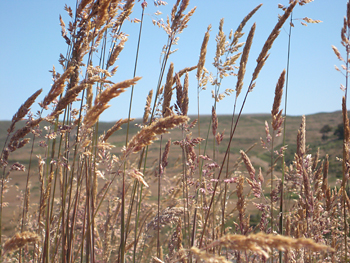Warming California climate gives exotic grasses edge over natives
BERKELEY — California’s native grasses, already under pressure from invasive exotic grasses, are likely to be pushed aside even more as the climate warms, according to a new analysis from the University of California, Berkeley. In the study, which has been accepted for publication in the journal Global Change Biology and is now available online, UC Berkeley biologists catalogued the ranges of all 258 native grasses and 177 exotic grasses in the state and estimated how climate change – in particular, increased temperature and decreased rainfall – would change them. They concluded that many of the traits that now make exotic grasses more successful than many natives also would allow them to adapt better to increased temperature and likely expand their ranges. “When we looked at current patterns, we found that warmer temperatures favor certain traits, and these are the traits possessed by exotic species,” said coauthor Emily Dangremond, a graduate student in the UC Berkeley Department of Integrative Biology. “This led us to predict that, if the mean temperature increases in all zones in California, there is an increased likelihood of finding exotic species, and an increase in the proportion of species in a zone that are exotic.” […] With grasses, the increase in exotics could make the state more prone to wildfires, since invasive grasses dry out in the summer more than do native grasses. Some grasses serve as reservoirs for viruses and other pathogens that attack food crops, while others more efficiently suck up water that would normally be used by other grasses and plants. […] Exotics differed significantly from natives on seven of the 10 traits in ways that made them more adaptable to higher temperatures. For example, exotics tended to be taller, have longer and wider leaves, higher specific leaf area, higher nitrogen mass in the leaves and higher seed mass, and were less likely to be perennial. Noxious invasives were even more extremely adapted to warmer temperatures. These traits account for the success of invasive exotic grasses, Dangremond said. Taller grasses, for example, give exotics more light-capturing ability and the ability to outcompete natives for light. Similarly, the larger seeds of exotic species could give these grasses a competitive advantage at the seedling stage. […] “I hate to be a doomsayer, but the problem is getting worse because of humans,” Dangremond said. “Humans promote the spread of invasive species by disturbing areas and letting weedy species come in, and grazing herbivores like cows and elk tend to have a negative effect on native plants anyway. Native species really have a lot to contend with now.”

Not to worry! Native or exotic, every species of grass needs to photosynthesize.
So they'll all die off!